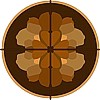Tell me all your stories, raves, gripes, etc. about the Shelix cutterhead. Planer and/or jointer comments are welcome. I'm thinking about getting one and would like to get a consensus on it. Shelix vs. conventional knife surface comparisons, noise, increased or decrease hp issues....anything and everything. Let'er rip!




 Reply With Quote
Reply With Quote











